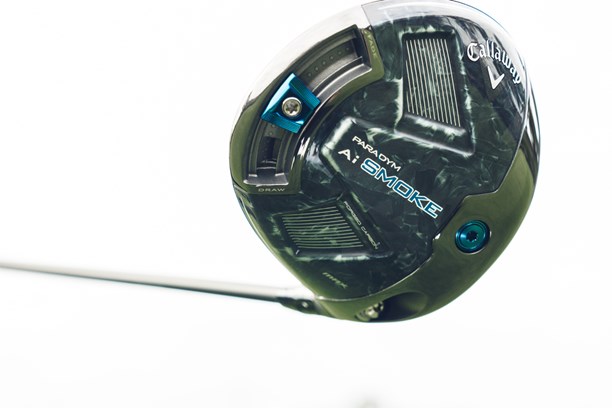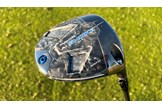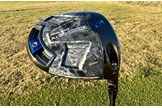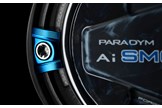The most complete driver of 2025: Callaway Paradym Ai-Smoke Max Review
Last updated:
-
At a glance
- TG Rating
- Owner Rating
-
Pros
- The new Smart Face concept is a really clever idea to tailor a driver more to your game.
- With four models to choose between, there's a driver solution in the Ai-Smoke family for everyone.
- These are good-looking, fast, and lovely-sounding drivers.
-
Cons
- The Max is one of the most costly drivers on the market.
What we say...
The Callaway Paradym Ai-Smoke Max driver is said to be sweeter no matter where shots hit the face. My review finds out if it delivers.
Whether we like it or not, Artificial Intelligence is playing an increasing role in our everyday lives. AI powers virtual assistants, medical diagnoses, driverless cars, and annoying online chatbots. But, when it comes to golf Callaway is absolutely determined to boss designing clubs using AI. So much so the design behind the new Callaway Paradym Ai-Smoke Max driver just wouldn’t be possible without it.
The company has put in years of work building knowledge to harness the power of AI, they’ve created some of the best golf drivers available, and the Ai-Smoke will help golfers hit drivers further and straighter than ever before. Here’s how…

A sweeter performance no matter where shots hit the face.
Pros
- The new Smart Face concept is a really clever idea to tailor a driver more to your game.
- With four models to choose between, there's a driver solution in the Ai-Smoke family for everyone.
- These are good-looking, fast, and lovely-sounding drivers.
Cons
- These are some of the most costly drivers on the market.
| Lofts | 9° / 10.5° / 12° |
| Stock shafts | Project X Cypher 2.0 (High Launch), Mitsubishi Tensei AV Blue (Mid Launch), Project X Denali Black (Low Launch) |
| Stock grip | Golf Pride Tour Velvet 360 |
The background
Callaway has been doing AI for 15 years
Other golf brands are starting to bat around how they use AI to design golf clubs. So, Callaway is quick to point out they’ve got more pedigree than the competition. The company bought its first super-computer back in 2009, yet it took 10 years before the Epic Flash launched in 2019. The first commercially manufactured golf product designed by AI.
This spells out how it’s impossible to just go to a local tech shop, buy a super-computer off the rack, start it up, and set it free designing drivers. With 120 people in Callaway’s R&D team and a dedicated Artificial Intelligence group assembled from outside golf, nobody in the game is more focused on writing lines of custom code to harness AI to design better-performing golf products.
Sweeter from every spot
The previous Paradym driver was a massive success. It won countless events in the hands of Jon Rahm, Sam Burns, Xander Schauffele, and Rose Zhang. Club golfers bought it in their droves too. The model represented a huge shift in how the company designs drivers, by incorporating a full 360° carbon fiber chassis. Hence the ‘Paradym’ name.
However, Callaway’s super-computer-driven AI has gotten so good, the company can legally claim the Ai-Smoke drivers are 7 yards longer than their predecessors. That’s data measured from 21 different spots across the face, not nine like the industry standard, which is staggering gains within a single generation.
How have they done it? Well, it all comes down to the most sophisticated driver face ever made, the super new Ai-Smart Face.

Everything you need to know about the Ai-Smart Face within the Callaway Paradym Ai-Smoke Max driver
A Swing Code developed from real player data
Typically drivers are designed using R&D robots, in a static environment. This means new designs are hit in different locations across the face and engineers study the results. Using a robot means there’s no opportunity to factor in how various categories of golfers deliver the club differently at impact.
What sets the Callaway Paradym Ai-Smoke Max driver apart then, is how it’s been optimized using real golfer swings.
Callaway says they’ve mapped 250,000 tour pro and consumer swings across the world because real golfers don’t swing like robots. The project has given the company over a million data points to feed into the super-computer, a move that better optimizes each of the four Paradym Ai-Smoke drivers for their intended audience.
Traditionally, drivers are designed using five to eight different face iterations, before selecting the best one. Thanks to artificial intelligence, the new Ai-Smoke models benefit from 50,000 electronic prototypes. Plus, thanks to the hours of real-world research, the Callaway Paradym Ai-Smoke Max driver is more tailored to the typical speed, club path, and impact location of its intended audience.
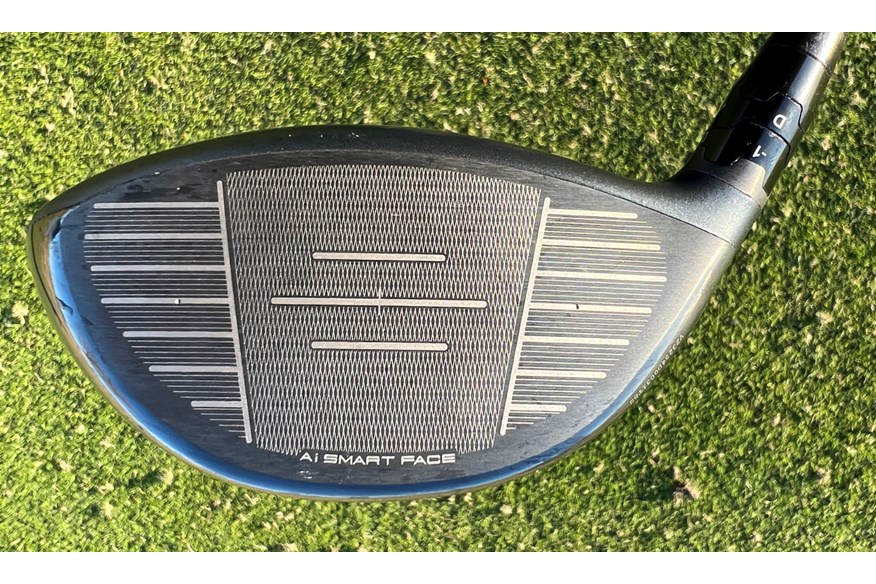
Micro trampolines
We’ve all heard how modern variable thickness driver faces act like trampolines and slingshot shots off faster and further than flat faces used to decades ago. It’s mind-blowing though that Callaway says the new Ai-Smart Face contains smaller areas that act like micro-trampolines. The idea is each counteracts a miss of the typical golfer who’ll use each of the four Ai Smoke driver models, which is really clever thinking.
Just to be clear this is not a bulge and roll story like TaylorMade’s TwistFace. It’s about changing the launch and spin of shots through the design and contouring of the face.
The idea has a big impact on down-range dispersion and means heel shots generate less cut spin, so the ball goes less far right (for a right-hander) and benefit from additional yardage. Where low spin shots hit high on the toe are less likely to fall out of the sky and draw less. Hence the ‘sweeter from every spot’ tagline.
What’s the benefit of Swing Code?
Swing Code is a whole new way to design driver faces. Callaway is the first to take this approach of designing individual faces for different types of golfers. But how can it help you play better golf?
Well, Callaway says it’s all about the number of times they can run their designs through the super-computer, as each time there’s an improvement in speed or dispersion from somewhere on the face. At some point though gains become virtually non-existent for that particular model.
Having the computer model 5,000 different faces dispersion stood at 85.29 sq yards. At 10,000 that dropped to 68.33 sq yds. While at 50,000 iterations the number incredibly narrowed to 33.89 sq yds. So AI has cut dispersion by almost a third.
It spells out why computer modeling completely outstrips human beings. Those in the know say it would have taken humans 10 years to make thousands of driver face iterations, and even then nobody would have dreamt up what the super-computer has.
Video: How does the Callaway Paradym AI Smoke Max compare to other leading forgiving drivers?
Which Ai-Smoke driver is best for you?
Callaway hasn’t just studied the impact point of where different abilities of golfers impact shots on the face, they’ve considered attack angle, club path, and speed too. Here’s how to break down where your driver game fits.
Callaway Paradym Ai-Smoke Max D and Max Fast driver
These golfers typically, but not always, swing driver between 75 and 90 mph, which is considered slow to average. Shots are likely to be sprayed from low heel to high toe and the attack angle will be down onto the back of the ball, with an out-to-in swing path.
Those needing the most help with fighting a slice should gravitate toward the Max D, whereas those needing additional speed should explore the Max Fast.
Callaway Paradym Ai-Smoke Max driver
The Max is Callaway’s core driver model, aimed at the majority of golfers. Those best suited to this set-up are likely to have an impact location a little higher on the face than Max D and Max Fast players. Shots are likely to be grouped a little more tightly on the face too.
Attack angles are likely to be a fraction down to a little up and the target player will generate mid-speed (90 – 100 mph). Possibly they’ll also have a fade rather than a slice as a stock shot.
Callaway Paradym Ai Smoke Triple Diamond driver
Triple Diamond golfers are likely to have a higher swing speed of 105 – 120+ mph and shots are much more likely to be grouped tightly around the center of the face. The attack angle should be up onto the back of the ball and players will generally have a much more neutral path.
Expect this driver to feature among the best low-spin drivers of 2025.
Everything you need to know about the Callaway Paradym Ai-Smoke Max driver
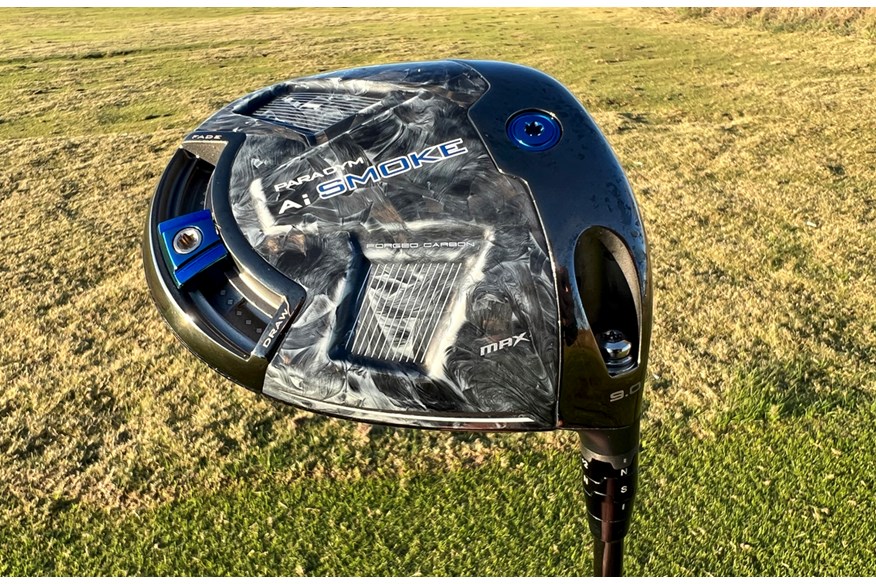
Callaway Paradym Ai-Smoke Max driver
RRP: $599.99 / £569
Lofts: 9° / 10.5° /12°
The Max is the core Ai-Smoke model. It’s the most forgiving driver in the family and will likely outstrip all the others put together in terms of sales. The Max is the only one in the family to have an adjustable sole weight, mass which will help golfers dial in a preferred shot shape.
Compared to the previous Paradym driver, the carbon chassis is 15% lighter (as it is with all four Ai-Smoke drivers), and there’s no Jailbreak technology. As thanks to their AI capability now being so powerful Callaway reckons the structure is designed straight into the face. The Max MOI is around 9K, yet expect dispersion to be better than other higher MOI drivers thanks to the efficiency of the Ai-Smart Face.

Typical player traits
Swing Speed: Mid Speed (90 – 100 MPH)
Impact location: Uses most of the face
Attack angle: Slightly upward
Club path: Slightly out to in path
Verdict: Callaway Paradym Ai Smoke Max driver
With arch-rivals TaylorMade and Ping both releasing drivers that smash the 10K MOI barrier in 2025, forgiveness is very much the hot topic of debate right now. With so much chatter and interest around MOI there’s a danger the Ai Smoke Max could become an after-thought for many club players. But based on our test results ignore this fast, far, and forgiving driver model at your peril.
We put the Ai Smoke Max up against all the leading forgiving drivers of 2025 in the hands of TG Test Pro Neil Wain at Keele Golf Centre. Our test data below shows how all the models compare.

Head shape
In terms of market share Callaway performed incredibly well with the original Paradym driver in 2023, even though we didn’t fall in love with the overall look and shaping of the model. As far as cosmetics and desirability go things have definitely stepped up a notch with the Ai Smoke in 2025.
The cosmetic shelf appeal is good, I like the smoke effect carbon fiber sole, and the graphics are much less funky Japanese than the previous model. The carbon fiber crown weave however is loud and in your face. Personally, I’d prefer it to be slightly less obvious or toned down like the PXG 0311 GEN 6 XF or Ping G430 Max 10K, but I appreciate for many it might well not be distracting to their eye.
Thanks to Callaway’s construction techniques there’s also a thin sliver of titanium that runs across the top edge (the carbon crown joins onto it) which compared to the infinity edge of the TaylorMade Qi10 Max draws the eye and gives a slightly less forgiving look at address.
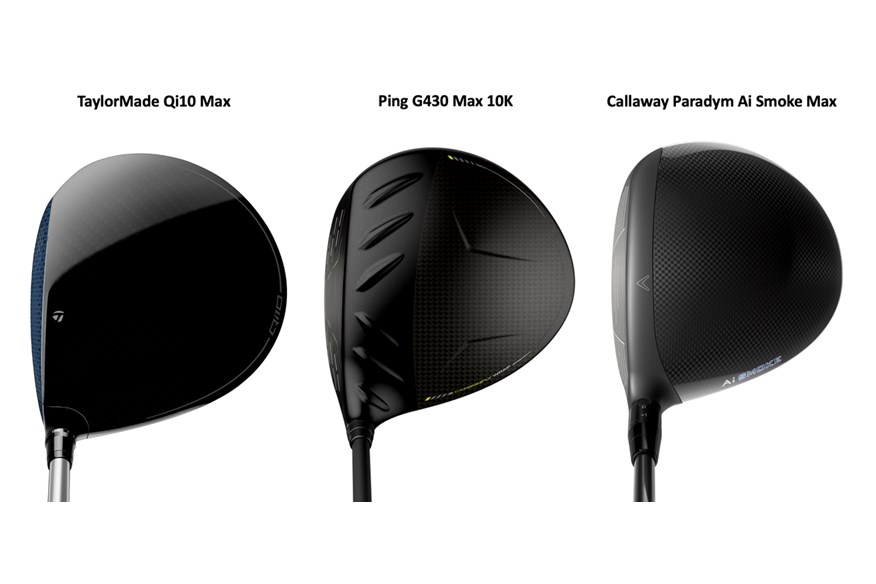
Performance
The nit-picking stops at subjective head shape though as the numbers the model posted during testing speak for themselves. At 272 yards the Max was for our test pro the longest-carrying forgiving driver of 2024 (with and without a non-stock shaft).
At our 10.5° test loft, the model produced a ball speed faster than our test average, launching and flighting shots higher without more spin, which gave a lovely hanging but powerful ball flight that will help decent-speed golfers maximize distance. With a premium Fujikura Ventus Blue shaft installed, we also saw an additional 3 yards carry distance over and above the stock Mitsubishi Tensei Blue shaft.
Unexpectedly this model (with the stock Tensei Blue shaft) also gave our test pro his tightest shot area across two test days. With shots being grouped into an area 37.6% smaller than our second-placed driver (the TaylorMade Qi10 Max) and 61.8% tighter than the test average.
Just bear in mind though dispersion figures usually change from session to session, so it’s a stretch to say this model will be more accurate on the golf course over a season than a 10K MOI driver.
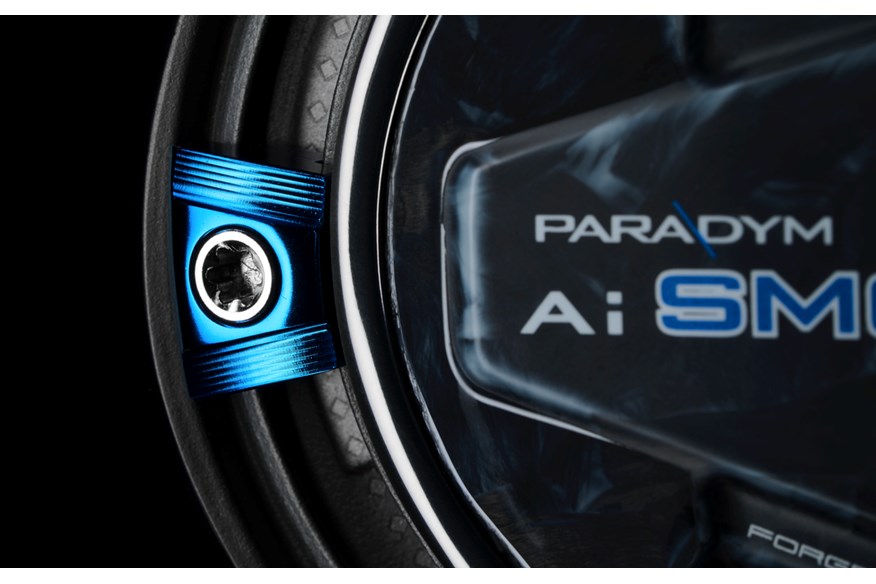
And finally…
Golfers are often guided by price and brand so it’s highly likely you’ll already have sway to one of the three best-performing forgiving drivers of 2025 (the TaylorMade Qi10 Max, Ping G430 Max 10K, and this Callaway Paradym Ai Smoke Max).
In a year that’s going to be dominated with talk of MOI the Ai Smoke is backed up by a brilliant AI story of its own, and if you can see past the bluster of Ping and TaylorMade’s 10K MOI models it’s a seriously good driver to boot. What it offers that the other two don’t is a sliding back weight, that allows you to dial in shot shape to your personal preference.
So, if your shot shape preference is something you struggle to replicate from its rivals the Ai Smoke Max becomes the perfect fit for you.
| Driver | Ball Speed | Launch Angle | Backspin | Height | Descent Angle | Carry Distance | Shot Area |
| Callaway Paradym Ai Smoke Max (Ventus Blue S) | 161 MPH | 11.9º | 2246 RPM | 34 YDS | 38.6º | 275 YDS (1) | 406.8 SQYDS |
| Callaway Paradym Ai Smoke Max (Tensei S) | 161.5 MPH | 11.4º | 2212 RPM | 32 YDS | 37.9º | 272 YDS (T2) | 210.6 SQ YDS (1) |
| Cleveland Launcher XL 2 | 162.6 MPH | 9.3º | 2033 RPM | 25 YDS | 31.4º | 272 YDS (T2) | 384 SQ YDS |
| Ping G430 Max | 162.8 MPH | 10.2º | 2397 RPM | 31 YDS | 37.4º | 271 YDS | 509 SQ YDS |
| Titleist TSR 2 (10º Tensei Blue S) | 161.1 MPH | 10.3º | 2266 RPM | 29 YDS | 35.7º | 271 YDS | 792.3 SQ YDS |
| TaylorMade Qi10 Max (8.5º Diamana X) | 162.4 MPH | 9.6º | 2201 RPM | 27 YDS | 34º | 270 YDS | 337.5 SQ YDS (2) |
| Ping G430 Max 10K (9º) | 163.1 MPH | 9º | 1993 RPM | 23 YDS | 30.1º | 270 YDS | 542.4 SQ YDS |
| Cobra Darkspeed X (Front Weight) | 161.6 MPH | 9.7º | 2161 RPM | 27 YDS | 33.7º | 270 YDS | 667.5 SQ YDS |
| Ping G430 Max 10K | 161.2 MPH | 11º | 2556 RPM | 34 YDS | 34º | 268 YDS | 506 SQ YDS |
| Cobra Darkspeed X (Back Weight) | 161 MPH | 9.9º | 2375 RPM | 29 YDS | 36.2º | 268 YDS | 370.8 SQ YDS |
| TaylorMade Qi10 | 159.2 MPH | 10.6º | 2338 RPM | 30 YDS | 36.8º | 267 YDS | 385 SQ YDS |
| PXG 0311 XF GEN6 | 160 MPH | 9.9º | 2226 RPM | 27 YDS | 34.5º | 267 YDS | 564.2 SQ YDS |
| PXG 0211 | 160.6 MPH | 9.9º | 2185 RPM | 27 YDS | 34.2º | 267 YDS | 953.7 SQ YDS |
| TaylorMade Qi10 Max (8.5º Tensei S) | 161.9 MPH | 8.6º | 2215 RPM | 24 YDS | 31.7º | 266 YDS | 630.5 SQ YDS |
| Wilson DynaPWR Ti | 161 MPH | 10.7º | 2532 RPM | 32 YDS | 39.1º | 266 YDS | 1001.3 SQ YDS |
| Cobra Darkspeed Max (Mid Launch Shaft) | 159.4 MPH | 11.5º | 2372 RPM | 33 YDS | 39.1º | 265 YDS | 342 SQ YDS (3) |
| Srixon ZX5 MK II | 158.2 MPH | 10.9º | 2300 RPM | 30 YDS | 37º | 264 YDS | 669.2 SQ YDS |
| TaylorMade Qi10 Max (Tensei S) | 161.2 MPH | 9.8º | 2823 RPM | 32 YDS | 39.5º | 263 YDS | 404 SQ YDS |
| Mizuno ST Z | 157.8 MPH | 9.6º | 1954 RPM | 23 YDS | 30.5º | 262 YDS | 750.5 SQ YDS |
| Mizuno ST X | 160 MPH | 8.6º | 1956 RPM | 26 YDS | 28.4º | 262 YDS | 609.6 SQ YDS |
| AVERAGE | 160.9 MPH | 10.1º | 2267 RPM | 28.8 YDS | 35.3º | 267.8 YDS | 551.8 SQ YDS |
*All lofts at 10.5º unless otherwise stated.
Still not sure which Paradym Ai-Smoke driver is best for you? Check out our full breakdown of what each model offers.
BECOME A TODAY’S GOLFER MEMBER: Unlimited access to premium content and exclusive rewards!
About the author

Simon Daddow – Today’s Golfer Equipment Editor
Simon Daddow is the Equipment Editor for Today’s Golfer. Having tested and played more than 10,000 clubs in his life, what he doesn’t know about golf clubs isn’t worth knowing.
He joined EMAP Active (now Bauer Media) as Equipment Editor in 2006 and has worked for both Today’s Golfer and Golf World. Working alongside our test pro Neil Wain, Simon has made todays-golfer.com the most reliable source for golf club testing.
Despite his youthful looks, Simon has played golf for more than 40 years and plays to a handicap of 10. A lack of club speed means he’s short off the tee, but very handy from 125 yards and in.
Simon’s job means he plays regularly around the world, and rates Kingsbarns as his favorite course. He uses a PXG 0311 GEN6 XF driver, TaylorMade Stealth 2 HL (15º), Ping G400 (20.5º), PXG 0317 X Gen2 hybrid, PXG 0311 GEN6 P irons (6–PW), Cleveland CBX2 wedges (52°, 58°), Ping 21 Fetch putter and a TaylorMade Tour Response golf ball.
You can contact Simon via email and follow him on Twitter for loads more golf equipment insight.
Product Information
Callaway Paradym Ai-Smoke Max driver
RRP: $599.99 / £569
Lofts: 9° / 10.5° / 12°
Adjustable hosel: Yes (-1°/+2°)
Typical player traits
Swing Speed: Mid Speed (90 – 100 MPH)
Impact location: Uses most of the face
Typical attack angle: Slightly up
Club path: Slightly out to in
Stock shafts:
Project X Denali - Lower Launch
Mitsubishi Tensei AV Series Blue - Mid Launch
Project X Cypher 2.0 - Higher Launch
Mitsubishi Tensei Silver - Lightweight (Max Fast)
Mitsubishi Eldio (Max Fast Women's)
Stock grip:
Golf Pride Tour Velvet 360
Winn Dri-Tac Lite (Max Fast)
Visit the Callaway Golf website here
